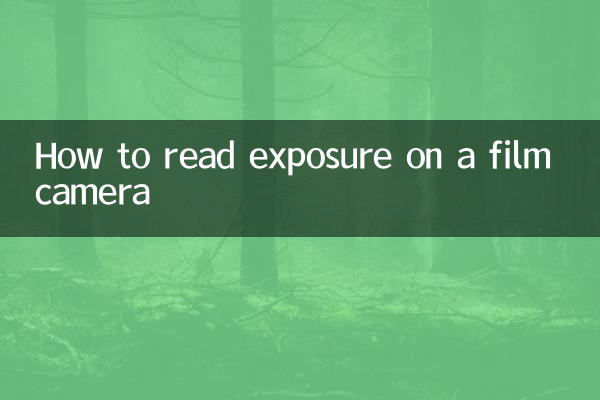How to read exposure on a film camera
Today, with the popularity of digital cameras, film cameras still have a group of loyal fans. For beginners, mastering film camera exposure skills is the key to taking good photos. This article will combine recent hot topics and hot content to provide you with a detailed analysis of how film cameras view exposure.
1. Basic principles of film camera exposure

Film camera exposure is accomplished through the interaction of aperture, shutter speed and sensitivity (ISO). Unlike digital cameras, once the exposure of a film camera is wrong, it is almost impossible to correct it later, so mastering exposure skills is particularly important.
| Three elements of exposure | effect | Adjustment suggestions |
|---|---|---|
| aperture | Control the amount of light entering and affect the depth of field | Open the aperture wide when there is insufficient light, and reduce the aperture when there is sufficient light. |
| shutter speed | Control exposure time and affect motion blur | Increase the shutter speed when shooting moving objects, and decrease the shutter speed in low light environments. |
| Sensitivity (ISO) | Affects film sensitivity to light | Use high-sensitivity film when the light is low, but be aware of increased graininess |
2. How to judge whether the exposure of a film camera is accurate
1.Use a light meter: Film cameras usually have built-in light meters or require an external light meter. The light meter will give a recommended aperture and shutter combination to help the user determine whether the exposure is accurate.
2.Observe the exposure indicator in the viewfinder: Many film cameras have exposure indicators (such as pointers or LED lights) in the viewfinder. By observing these indicators, you can determine whether the exposure is appropriate.
3.Refer to the Sunshine 16 Rules: If you don’t have a light meter, you can use the Sunlight 16 Rule. That is, in sunny conditions, the aperture is set to f/16 and the shutter speed is set to the reciprocal of the film ISO.
| light conditions | Aperture recommendations | Shutter speed recommendations |
|---|---|---|
| strong sunlight | f/16 | 1/ISO |
| Bo Yun | f/11 | 1/ISO |
| partly cloudy | f/8 | 1/ISO |
| cloudy day | f/5.6 | 1/ISO |
3. Recent hot topics and film camera exposure
1.film renaissance: Recently, discussions about film photography on social media have not diminished. Many young photographers have begun to try film cameras, and exposure techniques have become a hot topic.
2.The popularity of photometry apps: With the popularity of smartphones, many photographers have begun to use metering apps to assist film camera exposure, such as "Light Meter" and "Pocket Light Meter".
3.Exposure compensation for expired film: Expired film needs to increase exposure due to reduced sensitivity. Recently, a photographer shared his experience and suggested adding 1-2 stops of exposure to expired film.
4. Common problems and solutions for film camera exposure
| question | reason | solution |
|---|---|---|
| Photo is too dark | Underexposure | Increase aperture or decrease shutter speed |
| Photo is too bright | overexposed | Reduce aperture or increase shutter speed |
| Photo is blurry | Shutter speed too slow | Increase shutter speed or use a tripod |
5. Summary
Film camera exposure is a skill that requires practice and experience. By rationally using metering tools, mastering the three elements of exposure, and referring to the 16 Sunshine Rules, you can significantly improve your shooting success rate. The recent boom in film photography has also provided enthusiasts with more opportunities for learning and communication. I hope this article can help everyone better understand the exposure techniques of film cameras and produce satisfactory works.

check the details

check the details